Here Are Some Great Safety Tips For Pool Owners With Dogs
Many people consider their dogs an invaluable member of the family and will often bring them into the pool for a swim on a hot day. If you own a swimming pool, pooch pool safety is just as important as human pool safety. Here are some great safety tips if your dog loves your swimming pool as much as you do.
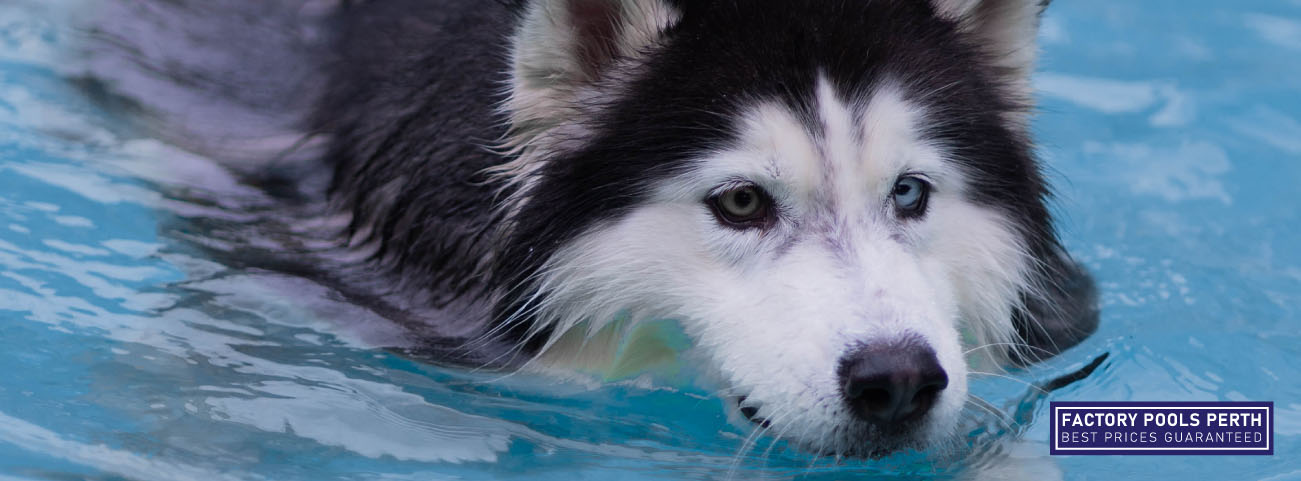
Only Let Your Dogs In The Pool Area When You Are In There With Them
The only time your dogs should be allowed in the pool area is when you are in there with them. They could easily slip in, and they may find it difficult to get out, if you don’t see them, this could be fatal. Make sure you never prop your pool fence open or put them in there temporarily to keep them away from something. Always check the climbable zone of your pool fencing to ensure there is nothing that they can climb up onto and into the pool area on.
Keep Your Chemicals Balanced At The Correct Levels
An unbalanced pool can become unsanitary to swim in reasonably quickly, especially in the warmer months, and if your furry friend is like many other dogs, they’ll likely drink some of the pool water in the excitement while paddling around. If the water is unbalanced and microorganisms and bacteria have started to pollute the water and then your dog subsequently drinks the water, then they may get an upset stomach. Unfortunately, issues relating to chemical imbalances and the health of your dog may not end there. Some dogs are sensitive to chlorine, this is more prevalent if your pool has too much bad chlorine in the water as it can cause skin irritations. It’s always a good idea to give your dog a quick wash with a hose to wash any chlorine off the skin rather than letting it dry.
To be on the safe side, it’s worth using a pet-friendly cleanser to clean your dog’s ears out after a swimming sesh and dry them properly. This can help to avoid ear infections such as swimmers ear. If you notice your dog’s ears are troubling them and they have been in the pool a lot, it may be worth getting a swimmers ear solution for dogs and applying it as recommended. If symptoms persist, a visit to the vets may be on the cards.
The good news is, if your pool is balanced correctly, the level of chlorine in a pool is highly safe and is unlikely to have any harmful effect on your beloved canine.
Always ensure your pool chemicals are stored out of reach.
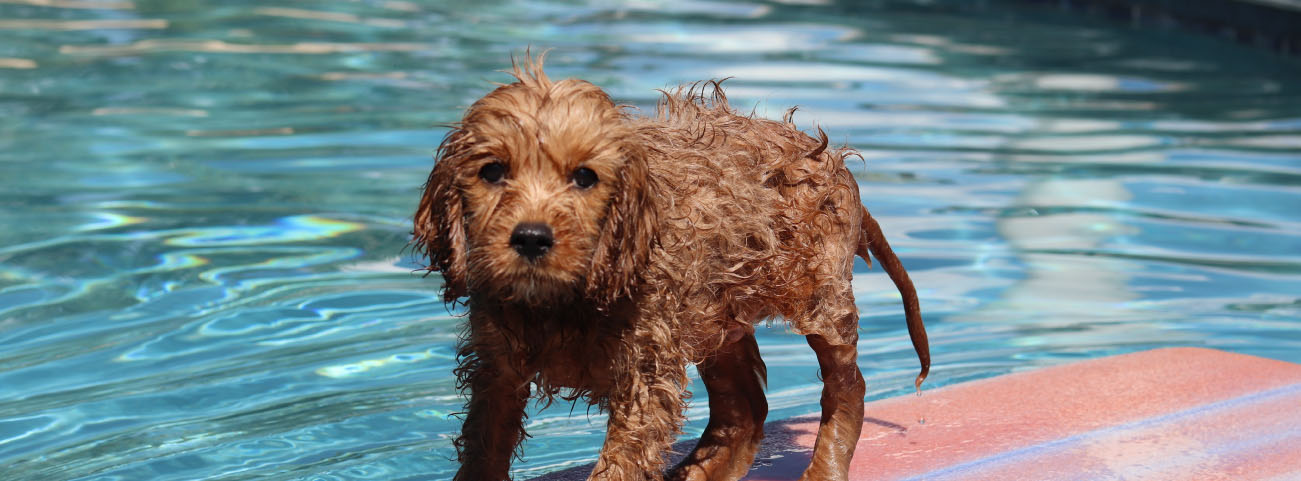
Teach Your Dogs To Be Pool Safe
It may sound far fetched, but teaching your dog how to paddle to the edge where they can stand, is a great way to ensure their safety around the water. Some dogs are better at swimming than other breeds and will instinctively go to the shallow end without any guidance or assistance from you. Other breeds, namely those with shorter legs and less agile swimming ability, may need a bit of your help to learn where the steps are. You do this by taking your dog into the water and then guiding them back to the step and repeating. You should aim to do this a few times every time you go in the pool, and soon enough, they’ll know exactly where to go if they need to take a break from swimming.
Install An Automatic Pool Cover
While you will have a pool fence, having an automatic pool cover can add an additional layer of protection. They can weight bear an adult so, if your dog happens to sneak into your pool area when you are not around or watching, you don’t have to worry about them falling in unsupervised. Pool covers are not only good at keeping your dog out of the pool but, they boast many other benefits including, keeping your pool water cleaner, reducing evaporation, minimising chemical consumption and much more.
Keep An Eye On Your Skimmer
Most breeds of dogs shed year-round, and many will shed more in the summer to make way for a lighter coat. Their fur will end up in your swimming pool and then make its way to the skimmer basket. If you can, try to give your dog a good brush to loosen and remove old fur before swimming to minimise the amount that ends up in the pool. If your dog has a long coat, check your skimmer after they’ve been in the water, it can web around the basket and prevent debris from passing through the holes as it normally would.
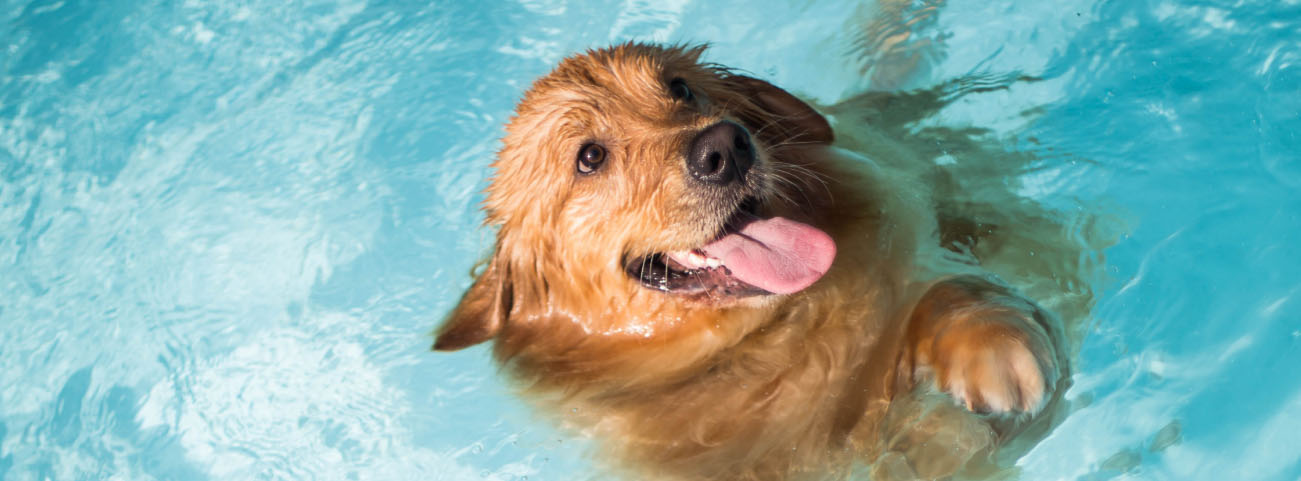
Design Your Pool Around Your Furry Pals
If you haven’t already got a pool, but you are considering installing one, it’s best to have a chat with your pool builder about the design if you would like your pooch to frequent the pool with you. Some things to consider include the pool fencing and the amount of shallow area it has. A tanning ledge or generous seating is perfect for dogs to cool off without having to tread water. If your dog is a small breed such as a chihuahua, you’ll need to ensure they cant get into the pool area through the gaps in the fencing. Running through these options before installing your pool can give you peace of mind that your pets will be safe in the pool, and they can run freely in the backyard without having to worry about them sneaking into the pool area.
With a few extra precautions, your four-legged family member can enjoy poolside fun with the family all year round, because let’s be honest, would it be the same without them? Remember, not all dogs love water, and some may not want to go in the pool. If this is the case, ensure you don’t pressure them and let them suss out the pool at their own pace. Forcing them can be traumatic and cause them to fret, and the likelihood of you getting scratched with claws in the panic is high.
Conclusion
If you’re looking for a swimming pool or some general advice about your pool and pets, contact the experts here at Factory Pools Perth. We specialise in showstopping fibreglass pools and will happily answer any questions you may have.
Here Are Some Great Safety Tips For Pool Owners With Dogs
Many people consider their dogs an invaluable member of the family and will often bring them into the pool for a swim on a hot day. If you own a swimming pool, pooch pool safety is just as important as human pool safety. Here are some great safety tips if your dog loves your swimming pool as much as you do.
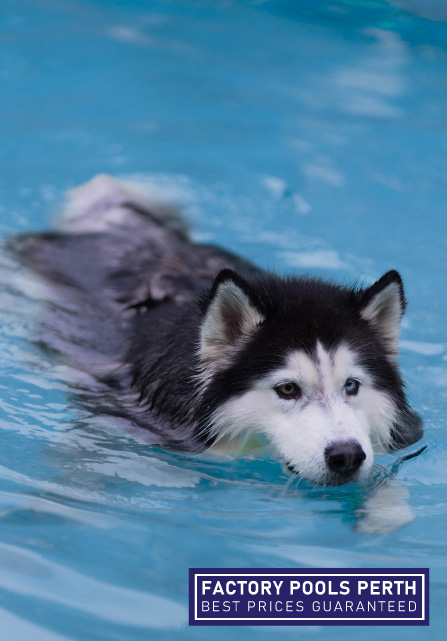
Only Let Your Dogs In The Pool Area When You Are In There With Them
The only time your dogs should be allowed in the pool area is when you are in there with them. They could easily slip in, and they may find it difficult to get out, if you don’t see them, this could be fatal. Make sure you never prop your pool fence open or put them in there temporarily to keep them away from something. Always check the climbable zone of your pool fencing to ensure there is nothing that they can climb up onto and into the pool area on.
Keep Your Chemicals Balanced At The Correct Levels
An unbalanced pool can become unsanitary to swim in reasonably quickly, especially in the warmer months, and if your furry friend is like many other dogs, they’ll likely drink some of the pool water in the excitement while paddling around. If the water is unbalanced and microorganisms and bacteria have started to pollute the water and then your dog subsequently drinks the water, then they may get an upset stomach. Unfortunately, issues relating to chemical imbalances and the health of your dog may not end there. Some dogs are sensitive to chlorine, this is more prevalent if your pool has too much bad chlorine in the water as it can cause skin irritations. It’s always a good idea to give your dog a quick wash with a hose to wash any chlorine off the skin rather than letting it dry.
To be on the safe side, it’s worth using a pet-friendly cleanser to clean your dog’s ears out after a swimming sesh and dry them properly. This can help to avoid ear infections such as swimmers ear. If you notice your dog’s ears are troubling them and they have been in the pool a lot, it may be worth getting a swimmers ear solution for dogs and applying it as recommended. If symptoms persist, a visit to the vets may be on the cards.
The good news is, if your pool is balanced correctly, the level of chlorine in a pool is highly safe and is unlikely to have any harmful effect on your beloved canine.
Always ensure your pool chemicals are stored out of reach.
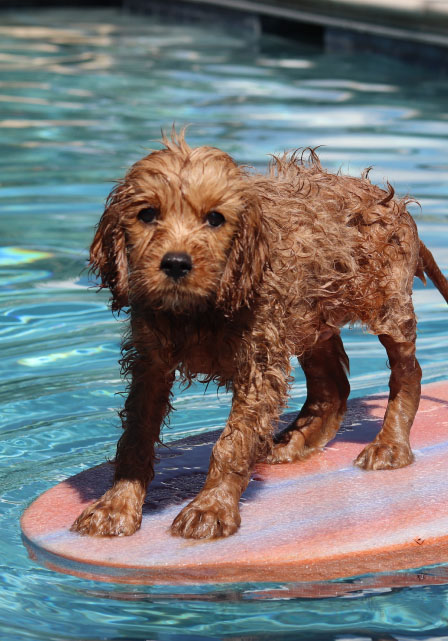
Teach Your Dogs To Be Pool Safe
It may sound far fetched, but teaching your dog how to paddle to the edge where they can stand, is a great way to ensure their safety around the water. Some dogs are better at swimming than other breeds and will instinctively go to the shallow end without any guidance or assistance from you. Other breeds, namely those with shorter legs and less agile swimming ability, may need a bit of your help to learn where the steps are. You do this by taking your dog into the water and then guiding them back to the step and repeating. You should aim to do this a few times every time you go in the pool, and soon enough, they’ll know exactly where to go if they need to take a break from swimming.
Install An Automatic Pool Cover
While you will have a pool fence, having an automatic pool cover can add an additional layer of protection. They can weight bear an adult so, if your dog happens to sneak into your pool area when you are not around or watching, you don’t have to worry about them falling in unsupervised. Pool covers are not only good at keeping your dog out of the pool but, they boast many other benefits including, keeping your pool water cleaner, reducing evaporation, minimising chemical consumption and much more.
Keep An Eye On Your Skimmer
Most breeds of dogs shed year-round, and many will shed more in the summer to make way for a lighter coat. Their fur will end up in your swimming pool and then make its way to the skimmer basket. If you can, try to give your dog a good brush to loosen and remove old fur before swimming to minimise the amount that ends up in the pool. If your dog has a long coat, check your skimmer after they’ve been in the water, it can web around the basket and prevent debris from passing through the holes as it normally would.
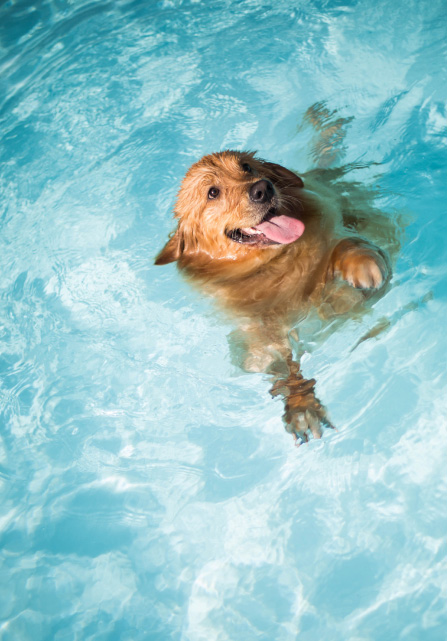
Design Your Pool Around Your Furry Pals
If you haven’t already got a pool, but you are considering installing one, it’s best to have a chat with your pool builder about the design if you would like your pooch to frequent the pool with you. Some things to consider include the pool fencing and the amount of shallow area it has. A tanning ledge or generous seating is perfect for dogs to cool off without having to tread water. If your dog is a small breed such as a chihuahua, you’ll need to ensure they cant get into the pool area through the gaps in the fencing. Running through these options before installing your pool can give you peace of mind that your pets will be safe in the pool, and they can run freely in the backyard without having to worry about them sneaking into the pool area.
With a few extra precautions, your four-legged family member can enjoy poolside fun with the family all year round, because let’s be honest, would it be the same without them? Remember, not all dogs love water, and some may not want to go in the pool. If this is the case, ensure you don’t pressure them and let them suss out the pool at their own pace. Forcing them can be traumatic and cause them to fret, and the likelihood of you getting scratched with claws in the panic is high.
Conclusion
If you’re looking for a swimming pool or some general advice about your pool and pets, contact the experts here at Factory Pools Perth. We specialise in showstopping fibreglass pools and will happily answer any questions you may have.



